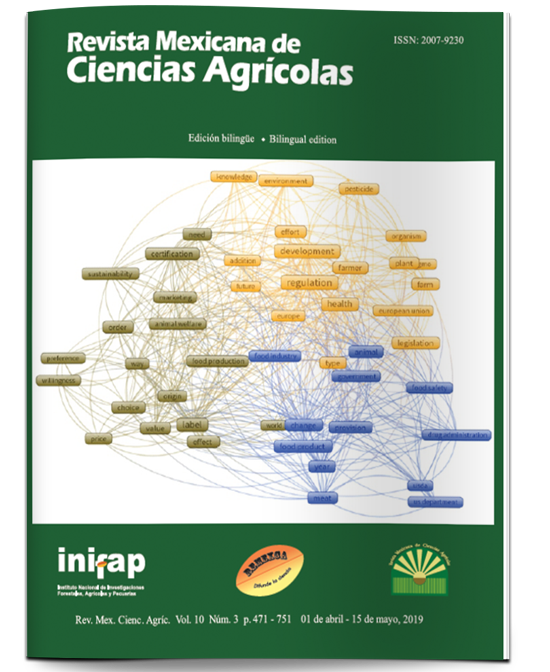Volatile organic compounds of plants induced by insects: current situation in Mexico
DOI:
https://doi.org/10.29312/remexca.v10i3.678Keywords:
interspecific communication, intraspecific communication, semiochemicalsAbstract
Plants produce and emit volatile organic compounds, generally they are mixtures that are composed of terpenes, fatty acid derivatives and aromatic compounds. Volatile organic compounds serve plants for: reproduction, attracting pollinators or seed dispersers, as a defense to repel insects or stop colonization by phytopathogenic bacteria and fungi, to attract natural enemies of herbivores and as intraspecific and interspecific messengers. Plants emit some volatiles especially when the vegetative parts are exposed to abiotic or biotic stimulation. Considering the foregoing, a bibliographic review was carried out, the purpose of which is to present the classification of volatile organic compounds in plants, to describe and indicate the characteristics of the extraction and identification techniques of volatile organic compounds, to present the advances reported in the scientific literature about these compounds induced by insects and their current situation in Mexico.
Downloads
Downloads
Published
How to Cite
Issue
Section
License
The authors who publish in Revista Mexicana de Ciencias Agrícolas accept the following conditions:
In accordance with copyright laws, Revista Mexicana de Ciencias Agrícolas recognizes and respects the authors’ moral right and ownership of property rights which will be transferred to the journal for dissemination in open access. Invariably, all the authors have to sign a letter of transfer of property rights and of originality of the article to Instituto Nacional de Investigaciones Forestales, Agrícolas y Pecuarias (INIFAP) [National Institute of Forestry, Agricultural and Livestock Research]. The author(s) must pay a fee for the reception of articles before proceeding to editorial review.
All the texts published by Revista Mexicana de Ciencias Agrícolas —with no exception— are distributed under a Creative Commons License Attribution-NonCommercial 4.0 International (CC BY-NC 4.0), which allows third parties to use the publication as long as the work’s authorship and its first publication in this journal are mentioned.
The author(s) can enter into independent and additional contractual agreements for the nonexclusive distribution of the version of the article published in Revista Mexicana de Ciencias Agrícolas (for example include it into an institutional repository or publish it in a book) as long as it is clearly and explicitly indicated that the work was published for the first time in Revista Mexicana de Ciencias Agrícolas.
For all the above, the authors shall send the Letter-transfer of Property Rights for the first publication duly filled in and signed by the author(s). This form must be sent as a PDF file to: revista_atm@yahoo.com.mx; cienciasagricola@inifap.gob.mx; remexca2017@gmail.
This work is licensed under a Creative Commons Attribution-Noncommercial 4.0 International license.



